Products are selected by our editors, we may earn commission from links on this page.
At just 17, Allison Stokke was a rising star in track and field — a national-level pole vaulter with real Olympic potential. But one photo, taken without her knowledge at a high school meet in 2007, changed everything. Overnight, she was no longer seen as an athlete, but as internet bait — her image shared, sexualized, and sensationalized across the web. The world couldn’t stop staring. And Stokke? She was left to pick up the pieces.
Family, Focus, Freedom

Allison Stokke, current fitness model and former elite pole vaulter, lives in Jupiter, Florida, with her husband, golfer Rickie Fowler, and their two daughters, Maya and Nellie.
Even though she is no longer competing, the once-world-famous athlete keeps movement central to her lifestyle. Her training continues, not for records or results but for clarity, strength, and a sense of self.
Looking at her now, most people could not imagine the chaos, pain, and public scrutiny she had to survive just to get where she is.
Wellness, Privacy, and the Freedom to Choose
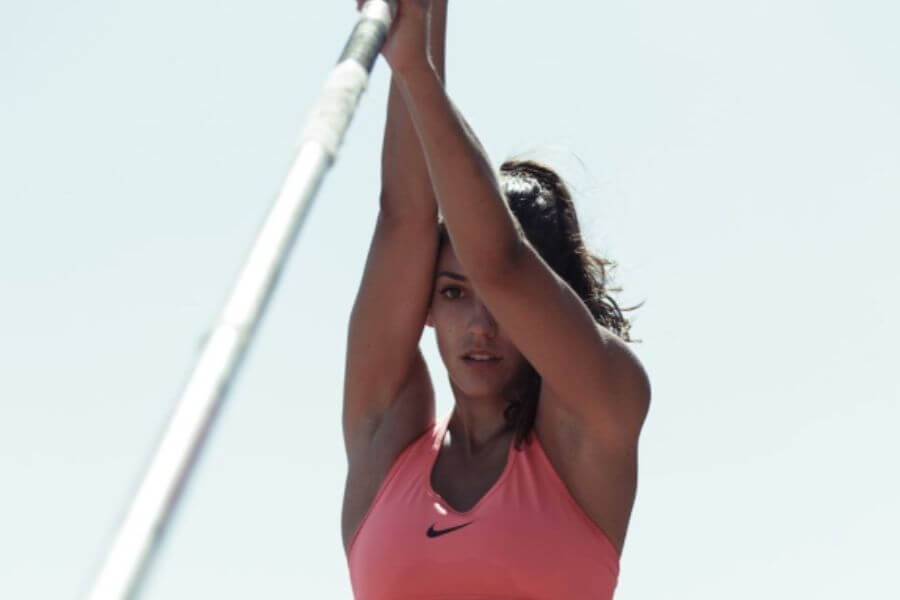
In Jupiter, life runs at a different pace — quiet, ocean-adjacent, and family-first. It’s where Stokke has built something enduring, far from headlines or sponsorship demands. It wasn’t always like this.
Though she collaborates with athletic brands occasionally, she stays grounded. Her work is authentic, shaped by lived experience, not shaped for marketing or a digital persona.
“I still love to move,” she once shared. “But now it’s for me. Not for approval. Not for pressure. Just because it feels right again.”
A Promising Career, Suddenly Rewritten

From childhood, Allison Stokke loved pole vaulting. She trained hard, broke records, and dreamed of greatness. Her athletic path was clear, disciplined, and full of potential.
By the time she was 17, Stokke was clearing bars at record-breaking heights — but her biggest challenge wasn’t physical. It was the attention she never asked for.
“It felt like none of my work mattered, ” she explained in an interview with ESPN. Her career stalled. Confidence faded. But, how did it all begin?
Roots, School, and Early Ambitions
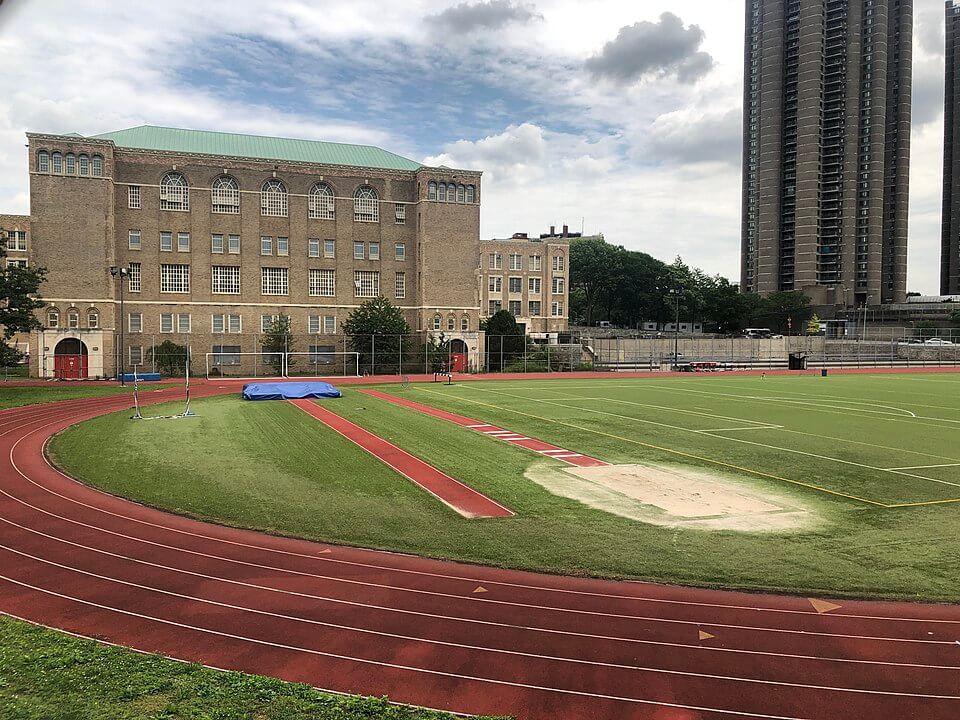
Allison Stokke was born on March 22, 1989, in Newport Beach, California. She grew up in a close-knit family with supportive, sports-loving parents.
Her father, Allan, and mother, Cindy, encouraged activity. Her brother David was a gymnast, and Allison briefly tried gymnastics too, before discovering her real passion: pole vaulting.
She attended Newport Harbor High School, excelling in athletics. Later, she studied sociology at the University of California, Berkeley.
Breaking Records Without Breaking a Sweat

In 2004, as a freshman, Allison Stokke cleared 3.86 meters — 12 feet, 8 inches — setting a U.S. record for girls aged 15 to 16, something that, before her, was unthinkable at the time.
That vault earned her a national title and signaled the arrival of a serious contender. She wasn’t just promising — she was already outperforming expectations early on.
Just one year later, she broke the record again! As a sophomore, she vaulted 4.11 meters — 13 feet, 5.75 inches — surpassing her own mark with effortless control. Many thought she was destined to make it big, but life had other plans for her.
A Setback, A Recovery, A Champion

Shortly after clearing 4.11 meters, Allison suffered a broken ankle during practice. A misstep ended her season, forcing six months of rest and recovery. She was devastated.
Her doctors urged caution. She stepped back, reluctantly. Missing competition was difficult, but she stayed focused on healing, determined to return stronger, not just sooner.
By senior year, she did exactly that. She vaulted 4.14 meters, placed eighth nationally, and was crowned California State Champion. She proved to be very resilient, which would greatly help her later in life.
Earning Her Way to College

Allison’s record-breaking vaults in high school didn’t just earn medals — they earned respect. Coaches across the country recognized her as an elite young talent.
Her consistent improvement and championship titles caught the attention of university scouts. Many offers came in, but in the end, she chose the University of California for its athletic tradition.
With a scholarship in hand, she joined the California Golden Bears. Her hard work had paid off, and she felt like she was only getting started.
One photo, One second, Everything Changed

In 2007, a journalist captured Allison competing. In the photo, she stood in a white athletic top, her right arm extended behind her head to adjust her ponytail, preparing to jump, her midriff showing.
The photo, innocent in context, was later reposted without consent by With Leather, a sports blog with a large male fanbase, which commented on how attractive she was. With a single camera click, this high school vaulter turned into an internet storm.
By 2008, the image appeared on a popular sports blog under the headline “Pole Vaulting is Sexy, Barely Legal. Meet pole vaulter Allison Stokke… Hubba hubba and other grunting sounds.”
Internet Chaos Hit Faster Than Expected

Within days, Allison’s image was everywhere. Blogs reposted it. Forums debated it. Strangers obsessed over it. Control vanished as her photo traveled without limits.
Tracking how many people saw the image became impossible. It multiplied online with staggering speed, spreading far beyond athletics or any original context.
That same week, she opened Facebook and found it broken — literally. So many friend requests poured in, the platform’s counter couldn’t keep up with demand.
Not The Fame She Dreamed Of

Offline, the impact hit just as fast. Cindy Stokke visited a local dry cleaner when the clerk recognized her last name on the printed receipt.
She asked, “Are you related to the girl in the pole-vaulting picture?” Cindy replied yes, not realizing how far the photo had already traveled.
The woman added, “Everyone in Korea is talking about it.” In just days, a private moment became international, and their family name was now attached to a global spectacle.
Attention Turned Invasive
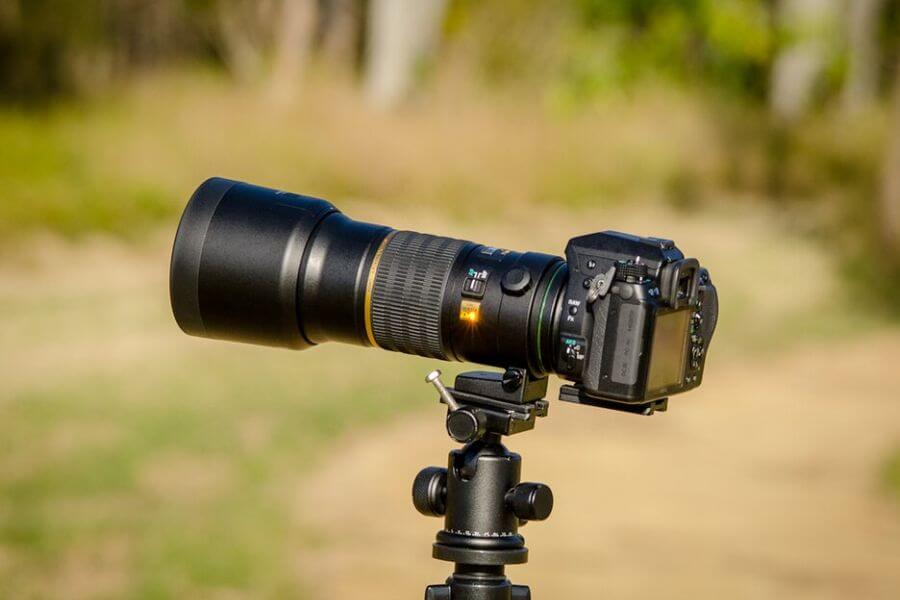
In the months following the viral photo, track meets became uncomfortable. Photographers began kneeling beneath Stokke, angling their cameras upward as she stood on the runway.
This wasn’t sports photography. It was an intrusion masked as coverage — a reminder that her body, not her performance, had become the focus of growing public attention.
At home, postcards began arriving. Grown men sent handwritten notes to her family’s California address — uninvited messages, crossing boundaries that never should’ve been blurred.
Public Obsession Became Personal Risk

The attention didn’t fade — it intensified. Allison’s college had to remove her headshots from the athletic directory due to persistent, inappropriate interest from strangers.
She was recognized in public and stared at in cafés. Simple outings became uneasy. She began locking doors, avoiding crowds, and limiting time alone outside her home.
Her father monitored online message boards, scanning for threats, what started as viral curiosity had become a safety concern, and a constant source of fear and vigilance.
They Weren’t Looking at Her Talent
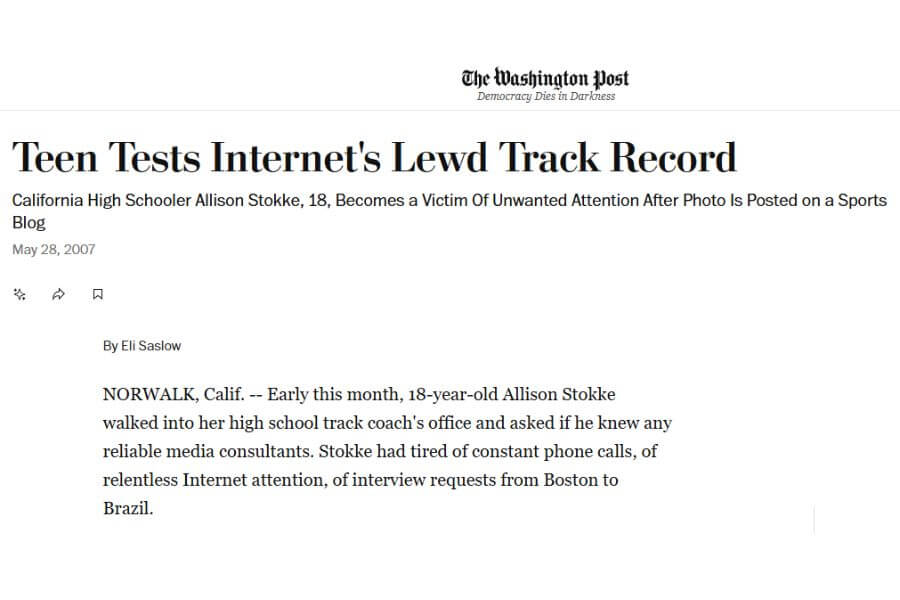
You could argue that people saw an athlete. But let’s be honest — most were just sexualizing a teenage girl in a sports uniform.
Allison wasn’t being celebrated for her vaulting records or form. She got attention because of her body, not her skill — something male athletes almost never experience.
She was underage, mid-competition, and still reduced to a photo fantasy. That wasn’t admiration. It was objectification, and it completely distorted how the world viewed her success.
A Split Between Image and Identity

At the young age of 18, Allison’s public image overtook her athletic identity. People saw sex, not sport — a fantasy, not a focused competitor.
She never wanted to be a symbol, yet society fused her strength and appearance into something she didn’t choose. How could she continue as an athlete after something like that?
“I feel like me and that picture are two different people,” Stokke has explained in the past. “I feel it has taken on a life of its own. It’s like that picture is my alter-ego; sometimes I use it for a positive force, and other times I don’t engage with it.”
The ‘Reality Show’ vs. Reality

Even as a teenager, Allison understood something was off. The media coverage far outweighed what she had actually accomplished in her sport at the time.
Offers poured in — interviews, magazines, even television. But she hadn’t won national titles or broken world records. The spotlight felt exaggerated, even undeserved.
“At that point, I wasn’t the best vaulter in the country, so why should I be getting that much attention?” she told ESPN, choosing silence instead.
Offers Came Fast, So Did the Catch
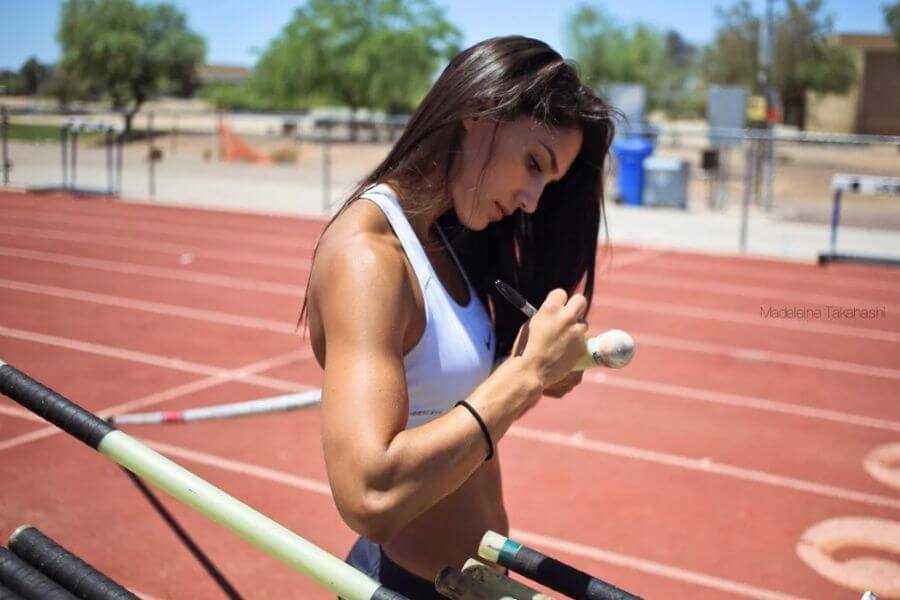
After the photo went viral, media outlets came calling. Maxim wanted a spread. Glamour showed interest. The Today Show invited her to appear on air.
People around her asked why she didn’t go for it — take the press, do the interviews, sign the deals. “Opportunities” like that rarely come twice.
But she knew the trap. If she accepted, she’d be called vain, unserious, over-sexualized. And if she refused? Then people said she was ungrateful — or just overrated.
She Spoke Up, But Nobody Listened
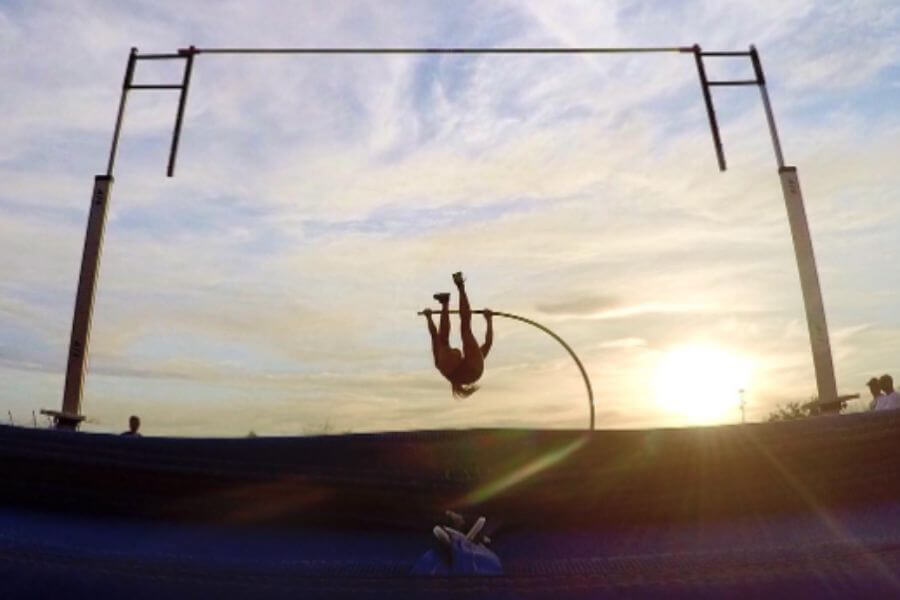
As the noise around her grew, Allison tried to make her point across. She gave a few interviews to important newspapers and media outlets, hoping the chaos would pass if she didn’t feed it.
“Even if none of it is illegal, it just all feels demeaning,” she told The Washington Post. She was trying to explain how she really felt about the whole situation.
“I worked so hard for pole vaulting and all this other stuff, and it’s almost like that doesn’t matter. Nobody sees that. Nobody sees me,” she declared. Not many listened.
Her Wins No Longer Made Headlines

Allison decided the best route would be to lie low and wait for things to cool off. But the quiet didn’t just reduce the noise, it also erased her from the places where she deserved recognition.
Even when she vaulted well or placed high at meets, her university no longer acknowledged it publicly. No articles, no photos, no mention on team pages.They didn’t want to bring any unwanted attention.
“I think at some point Cal just decided: don’t put anything up about her,” she reflected. In trying to protect her, they ended up silencing her altogether.
The Wall She Built

After facing so much unwanted attention — stalkers, inappropriate comments, strangers appearing “by coincidence” Allison felt the need to build an invisible wall between herself and the world.
It wasn’t fear, exactly. It was self-protection. The constant scrutiny made public spaces feel unsafe. Distance became survival, and privacy became something she had to construct.
“I’ve never seen this viral thing happen to a male athlete who isn’t also already the best at what they do”, she said. That line captured it all — the imbalance, the unfairness, the frustration
The Gender Divide

Allison has pointed out how male athletes are rarely sexualized before being recognized for their skill. With women, appearance often becomes the entire conversation.
She wasn’t wrong. Male athletes may be admired for their looks, but it’s secondary — never something that overshadows their records, rankings, or place in the sport.
For Allison, it was the opposite. Her body received more attention than her technique. Her image went viral long before her stats were ever mentioned — if at all.
She Felt Overwhelmed
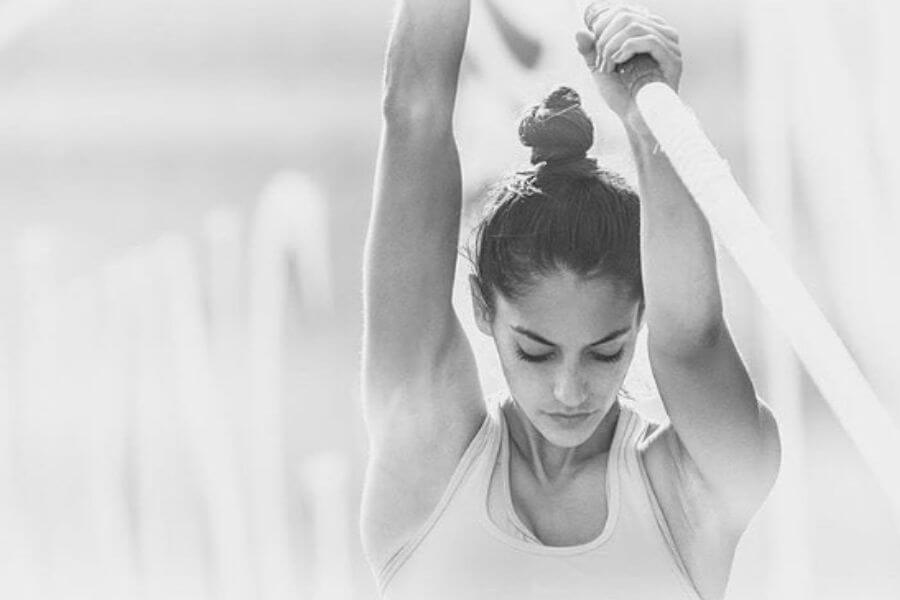
During her time at Cal, Allison once wrote about the experience for a sociology class — a personal essay on something emotionally difficult. Then she deleted it.
“We had the option to share or delete it,” she said. “And I didn’t share it. I deleted it. I wish I still had that somewhere.”
Her reaction to the attention was complex. “Was I flattered? In some ways, sure. But I was overwhelmed, too.” Those feelings, at 18, were hard to untangle.
Pressure Took a Toll on Her Performance
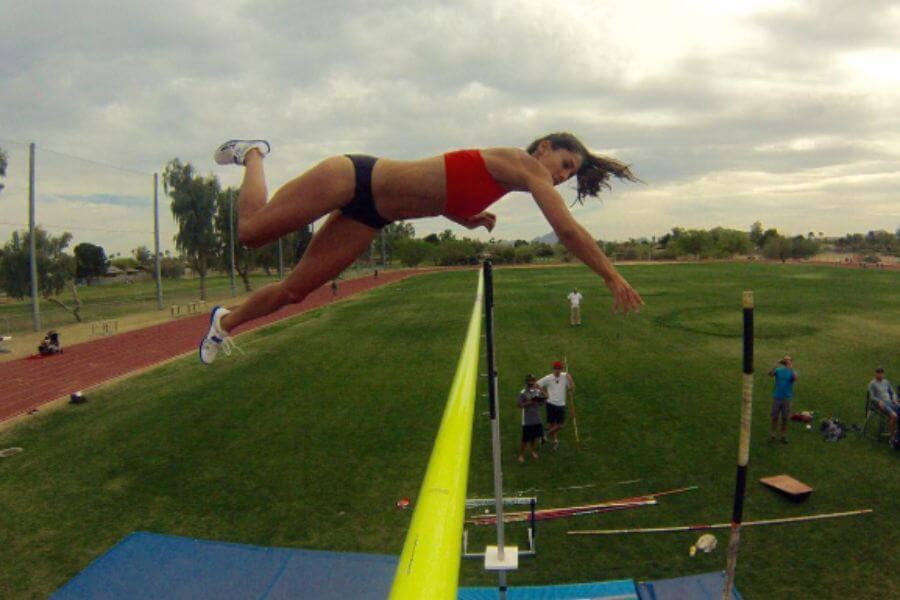
While the world focused on a single image, Allison Stokke was trying to focus on training — but the distraction and stress made that nearly impossible.
She admitted that her performance suffered during those years. The emotional weight of being sexualized, watched, and judged left her mentally drained and physically unfocused.
“I was dealing with all the collateral damage,” she explained later. Trying to vault under that kind of pressure meant carrying more than just a pole down the runway.
Channeling the Chaos Into Her Training

With time, Allison Stokke stopped avoiding what happened. Instead of running from the noise, she started learning how to channel it into something productive and personal.
“My response to being overwhelmed was to just stay away from it entirely,” she said. “But with time, I figured out how to reclaim it.”
“If I try to ignore it, it will take on a life of its own. Which is what I did in college — and I lost control mentally,” she explained.
Pushing to Become a Better Athlete

Allison kept training. She didn’t chase attention, didn’t retreat either. She worked to be seen for her results, not for a photo.
“I think I saw her grow up faster,” her mom, Cindy, said. “She saw how people could be cruel — and kind. But she kept going.”
“If she was going to be noticed, it would be for pole vaulting,” Cindy added. “She wanted to be recognized for ability, not appearance. That was always the goal.”
She Kept Competing, And Kept Getting Better

Despite the chaos surrounding her name, Allison Stokke stayed focused on her sport. At Cal, she trained hard, studied sociology, and kept setting new records.
As a freshman, she broke the school record indoors and outdoors with a vault of 4.11 meters. She competed at both the Pac-10 and MPSF meets.
She improved again in her second year, clearing 4.21 meters. She later placed eighth at NCAA Indoors in 2011, earning All-American status and national recognition for her performance.
After College, She Stepped Away

In her final year competing for Cal, Allison didn’t surpass her personal best. She placed eighth at Pac-10s and narrowly missed NCAA qualification.
After graduating, she took a break from pole vaulting. She focused on academics instead, stepping away from the sport to pursue a master’s degree.
However, a few years later, she moved to Phoenix and began training again, surrounded by a great team. She now felt more mature and in control, and wanted to give pole vaulting one last try.
One Last Push Toward Her Olympic Dream

After stepping away, Allison realized she still wasn’t finished. The desire to vault higher — to push her body further — never really left her.
She came out of everything stronger. Mentally tougher. Instead of walking away for good, she decided to give her lifelong dream one final, committed attempt.
That dream was always the Olympics. She wanted to do it right—train harder and smarter to give herself the best possible chance to make the U.S. team.
She Set a New Personal Best, But Fell Short

In 2012, Allison Stokke set a new personal best: 4.36 meters. It was her strongest vault yet, achieved while training for the London Olympic Trials.
Despite her efforts, she didn’t perform well at the Trials. Along with several others, she failed to clear the opening height of 4.25 meters.
After that, her results declined. The dream had pushed her further than ever before — but it wasn’t enough to reach the Olympic stage she’d worked toward.
Walking Away on Her Own Terms

After missing out on her Olympic goal, Allison Stokke slowly began to step away from pole vaulting. It wasn’t sudden — just a quiet, natural transition.
She didn’t leave out of failure. She left as a strong, self-assured woman — no longer the teenager swept into a viral storm she couldn’t control.
“I gave it everything,” she’s said in reflection. That was enough. Letting go wasn’t defeat — it was maturity. She walked away proud, knowing she had nothing to prove.
Taking Back Control of Her Image
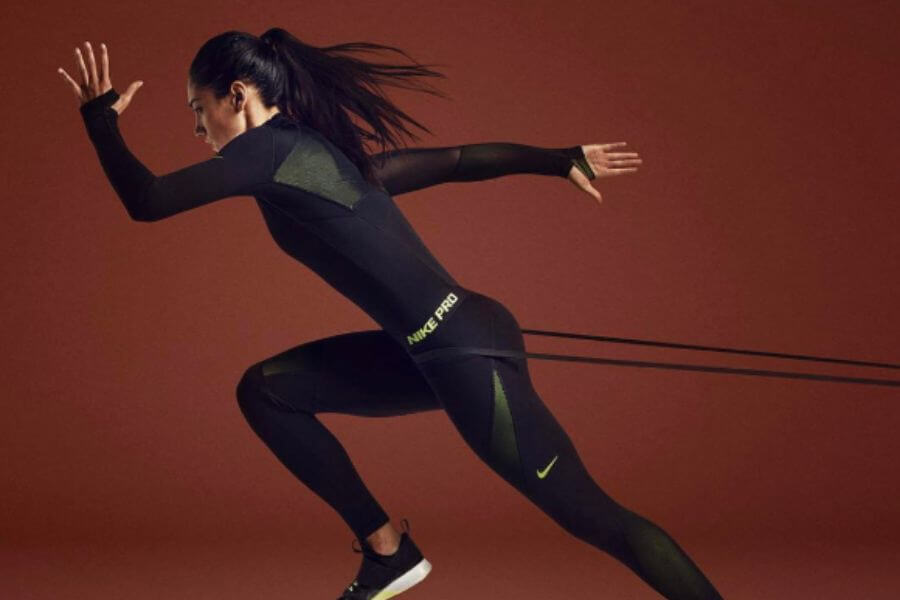
Nearly a decade after the photo went viral, Allison Stokke found a new path — not as a vaulter, but as a confident, self-directed sports model.
This time, it was her choice. She appeared in campaigns for Nike and Athleta in 2015, and Uniqlo in 2016 — all on her terms.
No one was stealing her image anymore. She decided how to show up, when to be seen, and how to use visibility as a form of empowerment.
Going Viral Again, For The Right Reason

Allison Stokke didn’t choose to go viral the first time. But years later, she used her visibility to elevate what always mattered most: her athletic skill.
Working with GoPro, she filmed herself vaulting with a camera mounted on her pole — capturing the motion, speed, and technical beauty of the sport.
By 2016, the videos had more than six million views. She went viral again — but this time, it was her talent, not her image, that people shared.
She Let Her Guard Down

After years of guarding her space, Allison Stokke slowly began to let those walls down. In 2017, she met someone who didn’t feel like a threat.
That someone was Rickie Fowler — a professional golfer who understood pressure, fame, and the emotional exhaustion that can come with being seen for the wrong reasons.
They connected not through headlines, but through shared experience. He wasn’t just a partner. He was an athlete, too — someone who respected her boundaries and matched her pace.
She Got Married, And The Spotlight Felt Right

On October 5, 2019, Allison Stokke married Rickie Fowler in a beach ceremony in Cabo San Lucas. It was intimate, joyful, and exactly what they wanted.
There were no press stunts, no magazine exclusives — just loved ones, sand, vows, and two athletes who found peace together after years of separate public lives.
“It just keeps getting better!” Stokke wrote in a caption. This time, she shared the moment not out of pressure — but because it was hers to share.
A New Kind of Joy

On November 18, 2021, Allison and Rickie welcomed their first daughter, Maya. It marked the beginning of a brand-new chapter in her life.
“As you can see Allison & I are beyond thankful … a whole new meaning to life!!” Fowler wrote on his Instagram account— a simple message that said everything.
In August 2024, they welcomed a second daughter, Nellie. “Right where I’m supposed to be,” Fowler shared. Parenthood, for them, became something private — but deeply celebrated.
She’s There for Her Husband

Allison Stokke now travels with Rickie Fowler to nearly every tournament. She’s not just present — she’s part of his routine, his calm, his support system.
On Netflix’s Full Swing, Fowler opened up about how much her presence matters during difficult seasons in his career, especially when confidence feels harder to hold onto.
“Going through this struggle for the last few years, and learning to open up… it’s not easy,” he said. “But hearing her side — it means something.”
Completely at Peace

These days, Allison Stokke lives a quiet, steady life. She’s a wife, a mother, and no longer defined by a moment that once felt overwhelming.
She doesn’t chase attention, but she doesn’t hide either. She appears calm, grounded, and at ease — living on her own terms, with nothing left to prove.
In the end, she came out stronger. What happened shaped her, but it didn’t break her. If anything, it gave her a clearer sense of self.
What Might Have Been
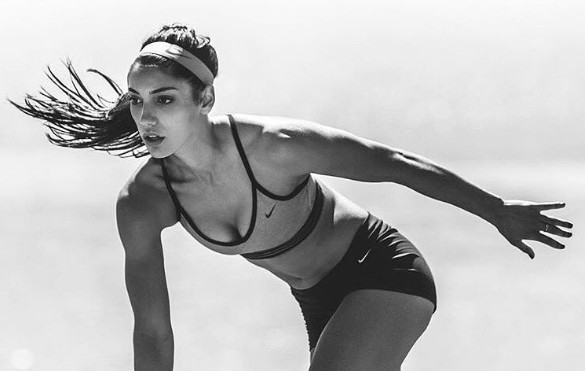
Even now, it’s difficult not to ask: what if that photo hadn’t gone viral? What if she’d only been seen as an athlete?
Would she have jumped higher? Reached her Olympic dream? Could she have trained in peace, without distraction, pressure, or fear — just focus, and the sport she loved?
We’ll never know. And neither will she. But one thing is certain: she made it through, stronger, wiser, and fully in control of who she is now.



